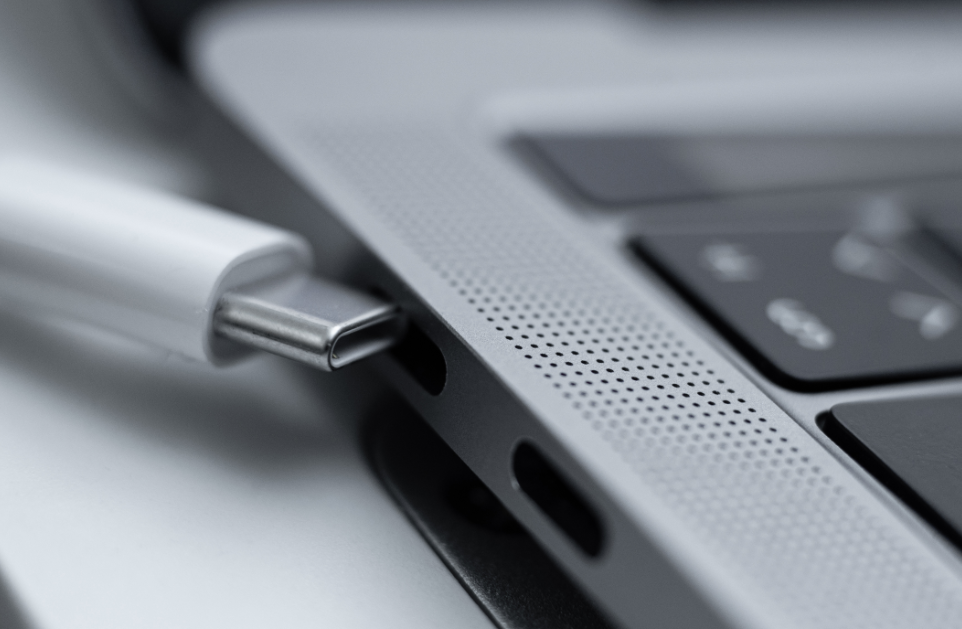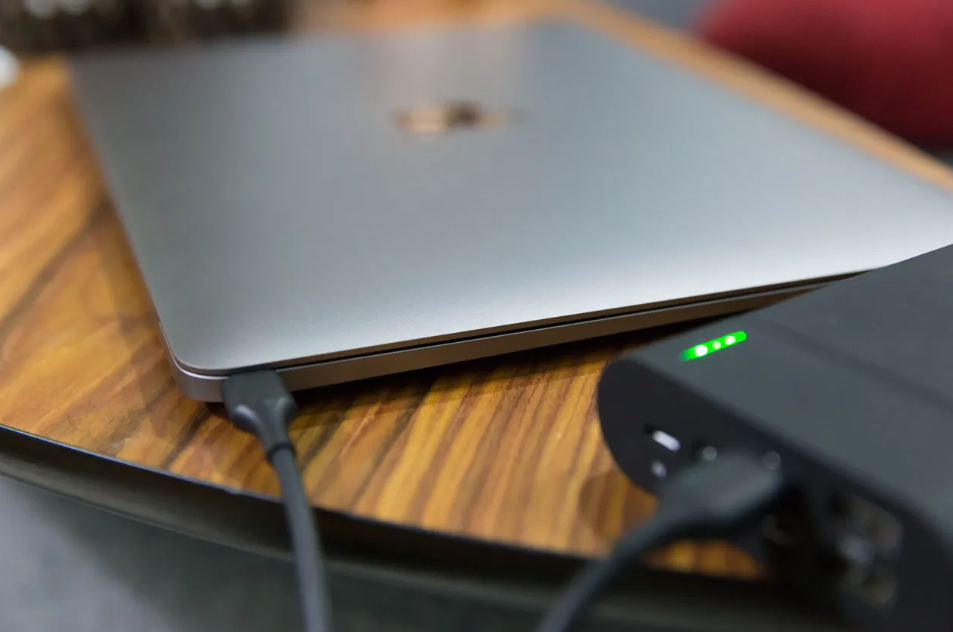It’s often the tech smallest components that wield the most significant impact, including your MacBook charger’s USB-C system. This unassuming port holds the key to optimizing your device’s performance and longevity. By appreciating its potential and needs, you can make the most of your device’s longevity.
So, we will delve into the dos and don’ts of using your MacBook charger’s USB-C port.
Dos: Maximizing Performance
Proper Insertion and Removal
To protect your USB-C port from damage, it’s essential to insert and remove the cable with care. Hold the cable by the plug, not the cord, and gently insert it into the port. When removing it, pull it straight out to avoid damaging the port’s connectors.
Clean and Protect
Dust and debris are formidable foes for your MacBook. Regularly clean the USB-C port using a soft brush or compressed air to prevent particles from hindering the connection. Additionally, steer clear of liquid spills, as they can lead to short-circuits and damage.
Charge Strategically
Avoid constantly plugging-in your MacBook charger in NZ. Instead, charge when the battery level drops to around 20-30% and unplug it when it reaches 80-90%. This practice, known as “partial charging,” helps prolong your battery’s lifespan.
Utilize Power-Saving Features
MacBooks offer an array of power-saving features and settings. Make the most of these to conserve energy. Lower the screen brightness, activate energy-saving mode, and close unnecessary background apps.
Optimal Charging Conditions
To ensure effective charging, create the right environment for your MacBook. Avoid exposing it to extreme temperatures, as this can lead to overheating. Instead, find a cool, well-ventilated space for optimal charging results.
Don’ts: Common Mistakes to Avoid
Overloading the Port
Avoid connecting multiple gadgets simultaneously, as this can lead to slower charging and potential damage.
Using Non-Compliant Accessories
Steer clear of non-compliant or uncertified accessories that claim compatibility with your MacBook. These accessories may not meet safety standards and could harm your USB-C port or even your entire device.
Ignoring Warning Signs
If your MacBook starts to overheat, experiences a sudden power loss, or displays unusual behaviour during charging, take immediate action. Ignoring these signs can lead to more significant problems down the line.
Conclusion
Your MacBook charger’s USB-C port plays a pivotal role in your device’s performance. By adhering to these dos and don’ts, you can maximize its potential, ensure the longevity of your MacBook, and savour a seamless charging experience. Treat your charger with care, and it will reciprocate by keeping your MacBook in top-notch condition.




